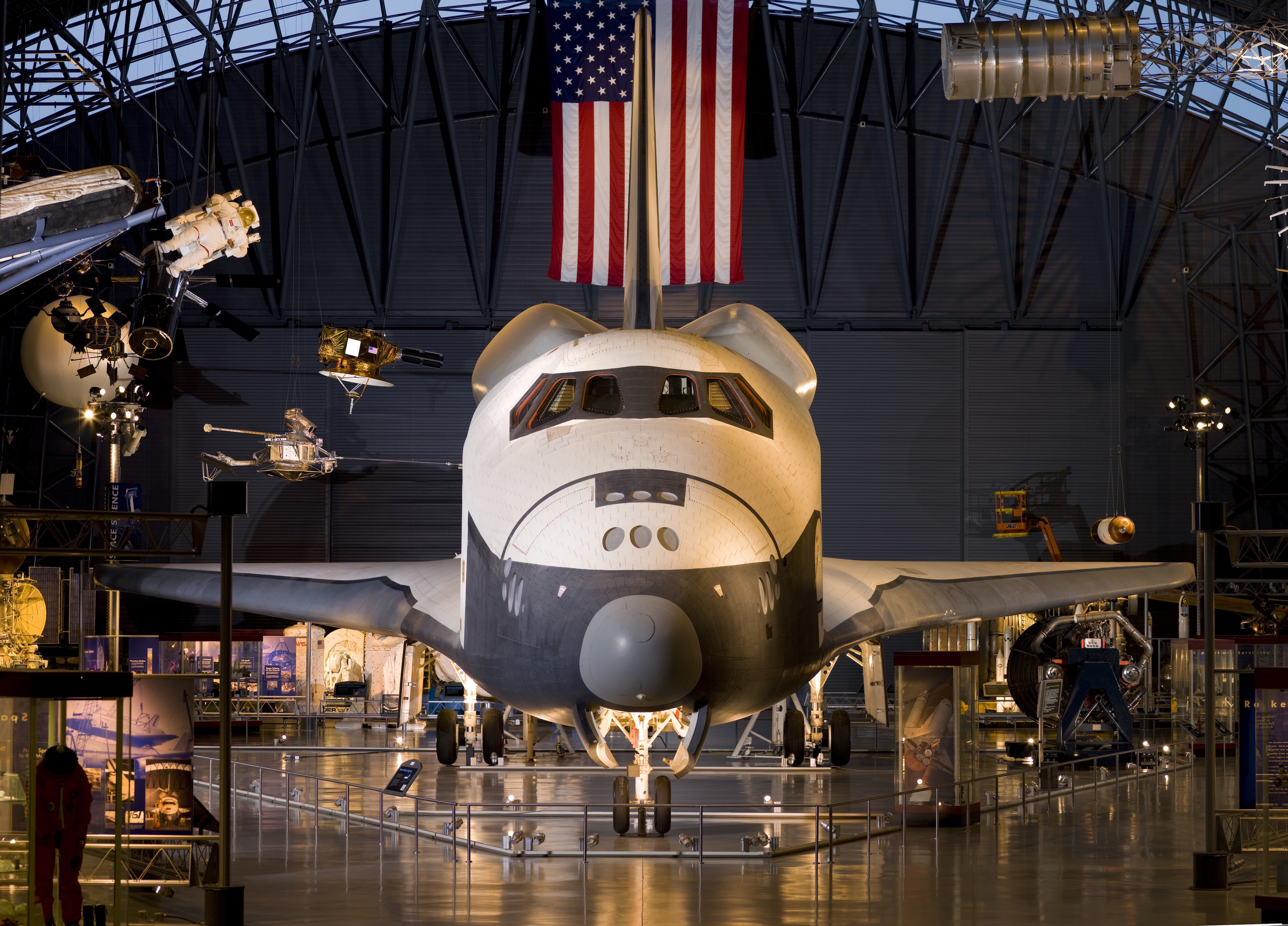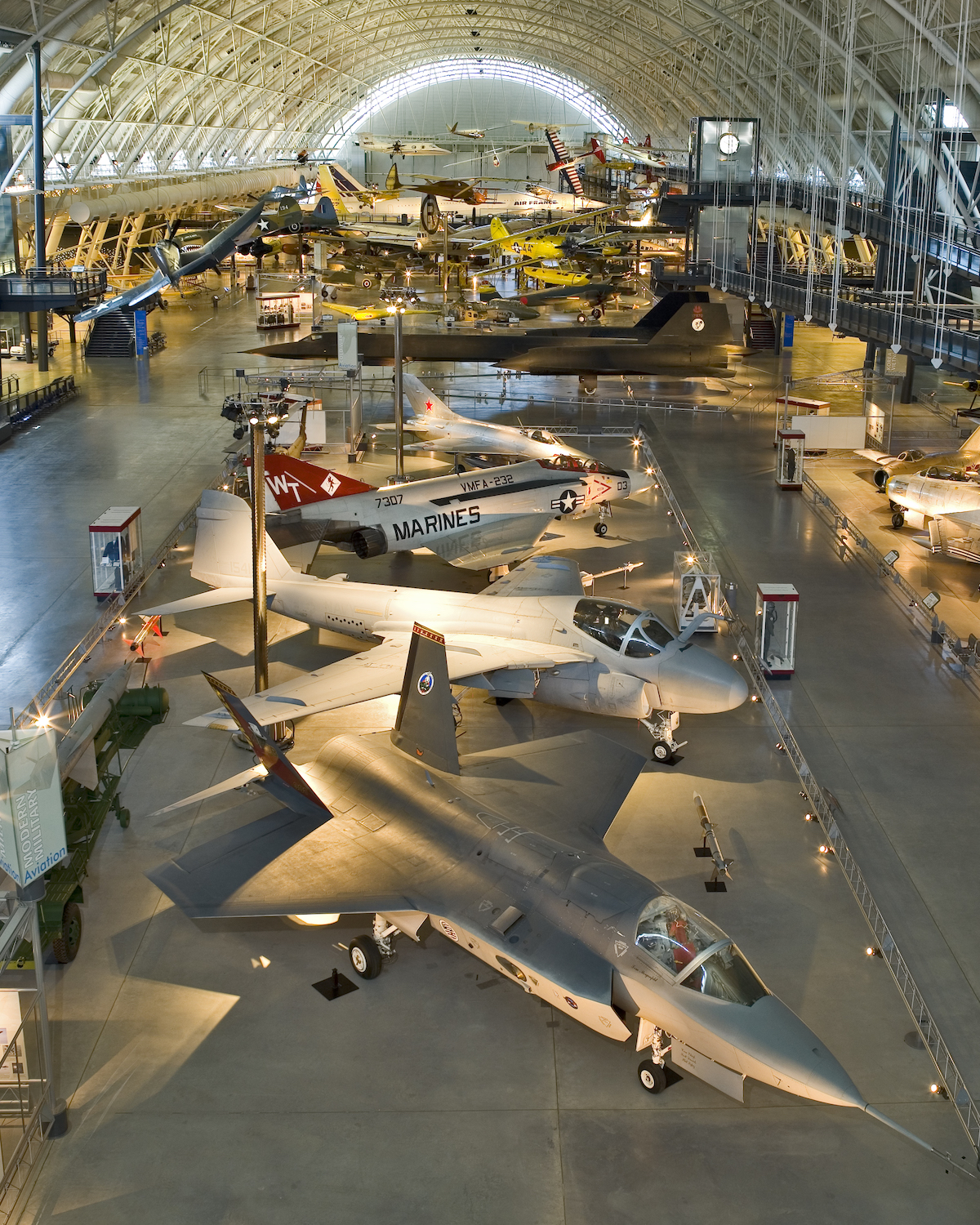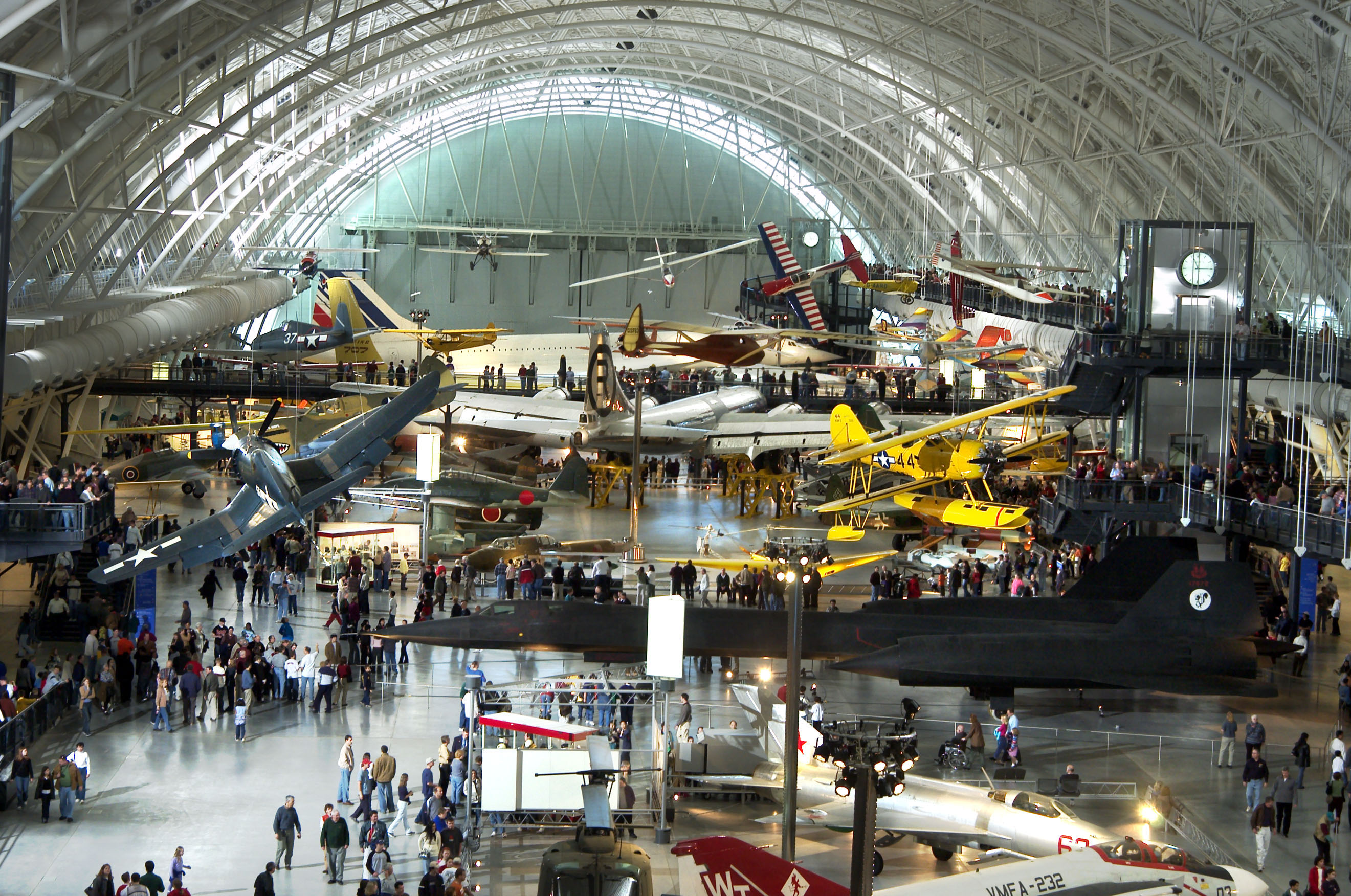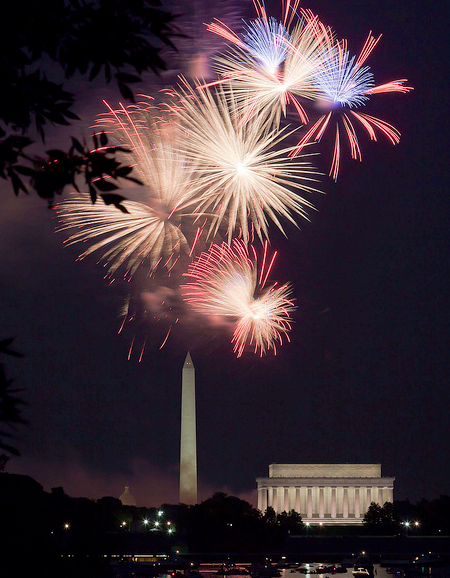
Space Shuttle Discovery in the James S. McDonnell Space Hangar, at the Steven F. Udvar-Hazy Center. The 2019 SSEP National Conference will be held next to Discovery. Click on the image to zoom.
Information still to be determined (if any) is in RED TEXT below.
Information that has been updated since this page went live on April 11, 2019, is in GREEN TEXT below.
Last update of this page: June 19, 2019, 1:20 pm ET
This is the 2019 SSEP Conference main page, which is accessible via the ‘Conference’ button in the navigation banner at the top. This page provides an overview of the conference, expectations, and logistical information. There are three sub-pages to this main page:
Jump to:
2019 SSEP National Conference – Agenda
2019 SSEP National Conference – Student Team Oral Presentations
2019 SSEP National Conference – Featured Talks and Family Science Night Presentation
From
Dr. Jeff Goldstein, SSEP Program Director
Center Director, National Center for Earth and Space Science Education
The Smithsonian National Air and Space Museum (NASM), the National Center for Earth and Space Science Education (NCESSE), and the Arthur C. Clarke Institute for Space Education are proud to host the 2019 SSEP National Conference at the Steven F. Udvar-Hazy Center, near Dulles Airport, Chantilly, VA, on Monday, July 1 and Tuesday, July 2, 2019.
All students and student teams that were engaged in SSEP experiment design and proposal writing—across the last 5 SSEP flight opportunities (SSEP Missions 9 through 13 to ISS)—are wholeheartedly invited to attend their conference with their teachers and school administrators, and their families.
The conference provides a formal gathering place where students present on their experiment designs, and those teams that flew experiments report results. We want to immerse students in the experience of a real science conference. It is fitting. If the SSEP is dedicated to letting students step into the shoes of scientists and engineers, then a conference should be part of the experience.
The conference was also scheduled before July 4th in the nation’s capital, so that attendees might be able to stay on and watch the 4th of July fireworks on the National Mall.
Conference Site – the Steven F. Udvar-Hazy Center
The SSEP National Conference is taking place in one of the most visited museums on the planet, the Smithsonian National Air and Space Museum, at the Museum’s Steven F. Udvar-Hazy Center, in Chantilly, VA. The Conference will take place in the James S. McDonnell Space Hangar, which was constructed to house Space Shuttle Discovery. The Conference will take place next to Discovery, which launched the Hubble Space Telescope in 1990, and conducted two servicing missions of Hubble in 1997, and 1999 (watch the launch of Discovery with Hubble in the video below). A stanchioned-off, ‘standing room only’ section of the hangar will remain open to the public so that the conference can be part of the public visitorship experience. This is a truly remarkable once-in-a-lifetime opportunity for attendees.
“The Steven F. Udvar-Hazy Center of the Smithsonian National Air and Space Museum, near Washington Dulles International Airport, is the companion facility to the Museum on the National Mall. The building opened in December, 2003, and provides enough space for the Smithsonian to display the thousands of aviation and space artifacts that cannot be exhibited on the National Mall. The two sites together showcase the largest collection of aviation and space artifacts in the world.”

The Steven F. Udvar-Hazy Center of the Smithsonian National Air and Space Museum. Click on the image to zoom.

The Steven F. Udvar-Hazy Center of the Smithsonian National Air and Space Museum. Click on the image to zoom.
IMPORTANT NOTES FOR CONFERENCE ATTENDEES:
Only pre-registered delegates with badges will be allowed entry to the main conference area.
SSEP students, their teachers, and their families that are interested in attending the 2019 Conference, but who are not already part of attending delegations, should review this page and contact their local SSEP Community Program Director as soon as possible. Only a SSEP Community Program Director can submit a request to NCESSE to add delegates, and such requests will be assessed by NCESSE on a first come first served basis. If you do not know the name and contact information for your Community Program Director send us an email via the Contact page as soon as possible.
NCESSE is able to make available VIP seats to representatives of SSEP strategic and national partner organizations, though VIP seating is limited. Partner organizations are asked to send us an email via the Contact page as soon as possible.
1. A Review of SSEP Program Pedagogy
When designing SSEP, we had our pedagogical approach to STEM education in mind. SSEP empowers the student as scientist, and within the real-world context of science that is far more than exploration through inquiry. SSEP allows student teams to design an experiment like scientists, with real constraints imposed by the experimental apparatus, current knowledge, and the environment in which the experiment will be conducted; it allows students to propose for a real flight opportunity like professional scientists, bringing critical written communications skills to bear; it allows students to experience a real 2-step science proposal review process; it allows students to go through a real flight safety review like professional researchers; and it provides students their own science conference, where they are immersed in their community of researchers, communicating their thoughts, ideas, and experimental results to their peers. Science is more than a way of thinking and interacting with the natural world. Science is more than a book of knowledge. Science is also a complex social landscape filled with challenges, and the need for multi-faceted and successful communication with one’s peers. SSEP is about introducing real science to our next generation of scientists and engineers.
2. Conference Opportunities and Expectations
The main objective for the conference is to provide student teams a venue to report on their SSEP research, which, for each team, is reflected in the design of a microgravity experiment to assess some facet of nature. Reporting is done through both oral and poster presentations, which is precisely what researchers do at professional science conferences.
Important Expectations: all students attending the conference that are part of SSEP experiment design teams shall present, either individually or as part of a team, an oral PowerPoint presentation in the conference venue (the James S. McDonnell Space Hangar), and a poster version of their PowerPoint to the visiting public.
- Each Team will be assigned a time for their oral presentation on one of the two Conference days, depending on their SSEP Mission. A team cannot request to present on a specific day.
- Each Team will conduct a poster presentation on the same day as their oral presentation.
Each team will therefore conduct their oral and poster presentations on the same Conference day.
CRITICALLY IMPORTANT: This is a real research conference. All student teams are presenting to an audience of their student researcher peers. It is therefore imperative that all student researchers recognize that:
- they are expected to attend all oral presentations and not only show up for their presentation. If student teams only showed up to present, there would be no audience and no conference,
- they are expected to be in attendance for both days of the conference.
Each presentation at the SSEP National Conference should include the science addressed by the experiment and why, the essential question that drove experiment definition, and the design of the experiment, including procedures for analysis of results (e.g., comparison to a ground truth experiment.)
For student teams that:
a. did not have their experiment selected for flight, the presentation should report on their ground truth experimental results, and possible hypotheses as to what they might have found if the experiment had been done on orbit and why.
b. had a flight experiment and it returned from orbit well in advance of the conference, the presentation should include formal experiment analysis and results.
c. had a flight experiment, but it returned to Earth just in advance of the conference, the presentation should report on preliminary results from the ground truth and flight experiments.
d. have a flight experiment, but it has not yet flown, the presentation should report on preliminary ground truth results if possible, and possible hypotheses as to what they might find when the experiment is done on orbit and why.
e. have a flight experiment currently on ISS, the presentation should include the current state of activities for both on-orbit experiment and ground truth experiments.
Oral Presentations
Oral presentations must be done in PowerPoint format – no other format will be allowed or considered. Each team will be limited to a MAXIMUM of 8 minutes, including 6 minutes for the formal presentation and 2 minutes for Q&A. All teams should be aware that the moderator will cut them off after 6 minutes to begin the Q&A portion, to ensure we remain on schedule – as is the case for professional conferences. If the team’s formal presentation is shorter than 6 minutes, then that will allow more time for Q&A in the allotted total of 8 minutes. A rule of thumb is to allow for 1 minute per slide, which suggests no more than 6 PowerPoint slides for a single presentation.
The oral presentation must include a slide at the beginning of the PowerPoint listing the title of the investigation, the SSEP community name, the schools represented, and a complete list of your student researchers, where each student is designated as a Principal or Co-Principal Investigator, Co-Investigator, or Collaborator. This slide must also include the name and affiliation of your Teacher Facilitator.
Teams should not use what might be considered a ‘cute’ title for their presentation. This is a formal research conference and the aim should be to use a formal scientific title.
The oral presentation must include a slide acknowledging all Local Partner organizations that made SSEP possible for the community, including funders, as well as institutions that provided staff to serve as research advisors or on the Step 1 Review Board for proposal review. A list of your Local Partner organizations that are known to NCESSE are found on the SSEP Community Profiles and Local Partners page for your SSEP mission. This slide must also include all SSEP National Partners that provided funding needed to close budget shortfalls for the community to participate in SSEP. Your Community Program Director should have a list of all Local and National Partners for your community. This slide is normally placed at the end of the PowerPoint.
Poster Presentations
As part of the Conference experience, we are setting up easels in the Museum for display board presentations by the student teams. The idea is to give the students the honor of interacting with the visiting public to one of the most visited museums on the planet and talk about their SSEP experiments.
The most straightforward way to create your poster presentation is to print in color, and on good quality paper, your PowerPoint slides and then tape them to the display boards. We will make available a 36 x 48 inch display board and an easel for each presentation team. Remember the rule of thumb is that a 6-minute PowerPoint should be associated with no more than 6 PowerPoint slides (or 1 per minute), which will fit on the display board.
To get a sense of both the oral presentations, and the poster presentations, see video highlights for prior SSEP National Conferences on the SSEP Scientific Return and Reporting pages.
Important Notes:
Oral Presentation Description: In advance of the conference, NCESSE will ask each student team to provide information on their oral presentation, including: the school, the grade level of the team, the presentation title, the type of experiment and SSEP flight opportunity (e.g., Flight Experiment, Mission 11 to ISS), the names of the researchers on the team (broken out by Principal Investigators, Co-Investigators, and Collaborators), the name of the Teacher Facilitator, and a description of the presentation – called an ‘Abstract’. The Abstract shall not exceed 80 words.
You will find a sample Oral Presentation Description, and a downloadable Oral Presentation Template that each student team is required to complete and submit to NCESSE, on the 2019 Student Team Oral Presentations page. Once received and approved by NCESSE, your Oral Presentation Description will be added to the 2019 Student Team Oral Presentations page.
Oral Presentation Descriptions are due no later 5:00 pm ET, Monday, June 10, 2019, and need to be emailed to John Hamel (johnhamel@ncesse.org)
Photo-Releases: We are video-archiving the conference, with video clips to be posted on YouTube. Video clips of all oral presentations at prior SSEP conferences can be found at the Scientific Return and Reporting page. A signed photo-release from all attendees is therefore essential. In advance of the conference, EVERY attendee must provide a signed photo-release form, allowing video-taping by NCESSE. Anyone without a signed photo-release form on file cannot be admitted to the conference site. A blank Smithsonian photo-release form template will be sent to the community leadership in those communities sending SSEP delegations to the conference.
IMPORTANT NOTE 1: Only Smithsonian Institution photo-release forms will be accepted. Standard forms used by schools will not be accepted.
IMPORTANT NOTE 2: NCESSE will only accept a single PDF file from a community’s leadership that must include ALL photo-release forms for the community’s attendees. All photo-release forms completed by individual attendees must therefore be submitted to their community leadership and not NCESSE.
IMPORTANT NOTE 3: a photo-release form for a minor must be signed by a parent or it cannot be accepted.
Photo-releases as a single PDF file are due from each community no later 5:00 pm EDT, Monday, June 10, 2019, and need to be emailed to John Hamel (johnhamel@ncesse.org)
Email your PowerPoint, and Bring a Back-up PowerPoint on a Thumb Drive: All presenters are required to email their PowerPoint presentations to NCESSE for review, approval, and acceptance. However, make sure to bring with you to the Museum a backup of your PowerPoint presentation on a thumb drive.
PowerPoint presentations are due no later 5:00 pm EDT, Monday, June 10, 2019, and need to be emailed to John Hamel (johnhamel@ncesse.org)
Banner: Remember that for your PowerPoint and poster, you have access to a high resolution SSEP Program banners at: http://ssep.ncesse.org/links/
Food: Attendees are on their own for lunch in the area, and no food or drink can be brought into the Museum. Note that the Museum has a McDonalds where the conference is being held.
Museum Fees: Entry to the Museum is free but the IMAX films, planetarium shows, and simulator have a fee.
3. Conference Venue Space Limitations and Attendance Restrictions
The venue for the Conference, the James S. McDonnell Space Hangar, will have very real seating limitations. The maximum capacity is 100 seated, but there will also be a significant space for standing room only, for both conference overflow attendees and for the Museum’s public visitorship.
REQUIRED ATTENDANCE RESTRICTIONS: NCESSE expects 2019 conference attendance greater than the maximum seating capacity, and therefore requires a protocol to ensure that no more than 100 seated attendees are in the conference space at any given time. By definition the solution must be a compromise.
The conference is designed to provide the SSEP student researchers a true research conference experience. The conference is therefore specifically designed to host the student researchers and their teacher facilitators. Family members – parents and siblings – are a secondary audience. Yet family members typically comprise the largest attendance block.
We will therefore place priority on allowing all student researchers and their teachers/administrators to be in the conference space for both days.
4. Current Conference Attendance Status – as of June 19, 2019
23 oral presentations, representing 17 SSEP communities, and 274 attendees.
274 attendees – 88 student researchers, 57 teachers/administrators, 121 family members and 8 other stakeholders
5. Conference Cost
NCESSE and NASM recognize that conference travel costs for attendees are significant, and in the midst of tough economic times for many communities.
Professional conferences are always associated with registration fees to cover AV, room rental, and the significant staff time for logistics and program delivery. That said, both NCESSE and NASM have worked hard to minimize conference costs, and have absorbed these costs in their operating budgets. There is no registration fee for attendees. We do not want to add to the burden for attendees, and feel a memorable and very real research conference at the Museum—for students taking part in this ground-breaking U.S. National STEM education initiative—is something we wanted to do without cost.
We are looking forward to your arrival in the Nation’s Capital, and our get-together as an SSEP family.
6. Hotel
The hotel we are recommending for the Conference is the Holiday Inn Washington-Dulles International Airport. It is a 10-15 minute drive from the Steven F. Udvar-Hazy Center. NCESSE has reserved a block of rooms at the Holiday Inn at conference rates – $74/per night, which does not include 13% tax. Note this block of rooms will only be available for a limited amount of time. Any unused rooms will be released back to the Hotel likely 6 weeks prior to the Conference, by Friday, May 31, 2019. This information will be passed on to the SSEP Community Program Directors in each community to pass on to their delegations.
The Student Spaceflight Experiments Program (SSEP) is a program of the National Center for Earth and Space Science Education (NCESSE) in the U.S., and the Arthur C. Clarke Institute for Space Education internationally. It is enabled through a strategic partnership with DreamUp PBC and NanoRacks LLC, which are working with NASA under a Space Act Agreement as part of the utilization of the International Space Station as a National Laboratory. SSEP is the first pre-college STEM education program that is both a U.S. national initiative and implemented as an on-orbit commercial space venture.
The Smithsonian National Air and Space Museum, Center for the Advancement of Science in Space (CASIS), and Subaru of America, Inc., are U.S. National Partners on the Student Spaceflight Experiments Program. Magellan Aerospace is a Canadian National Partner on the Student Spaceflight Experiments Program.

